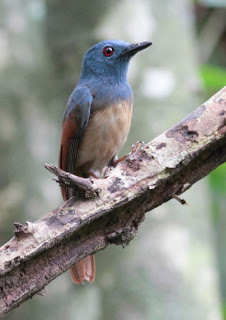A sure see bird in TRA. This happy go lucky
bird will be found among the low vegetation along the riverside. Their familiar
busy whit-whit call is very distinct. Approachable upto 10ft when they are
obliging.......
People will think that it has a bloody injured breast but not to worry it is their macho mark. The female also have the red crown but body is just plain olive to yellow.
People will think that it has a bloody injured breast but not to worry it is their macho mark. The female also have the red crown but body is just plain olive to yellow.















